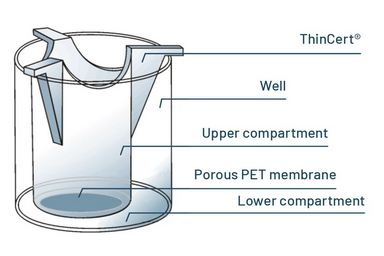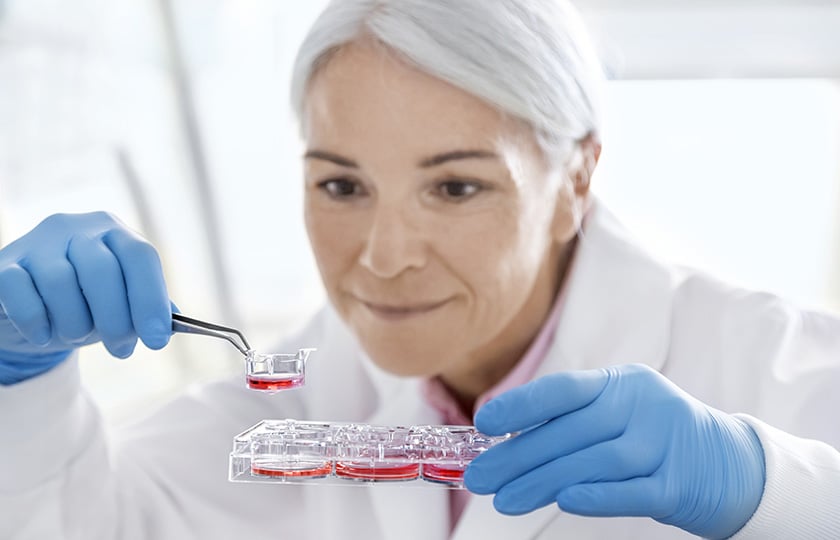ThinCert® - A Tool for the Rapid Generation of Vascularized Tumoroids
ThinCert®, a two-compartment system, can be readily used to quickly generate vascularized patient-derived tumoroids (PDT; tumor-like organoid) and mimic a range of other in vivo situations including cell migration, interactions, lumen-lumen transport, and tissue growth and differentiation at an air-liquid-interface (ALI).
Patient-derived tumoroids — a promising approach to functional drug screening
The rapid generation of patient-derived tumoroids (PDT) that recapitulate patient tumors, including vascularization, is a promising development in personalized medicine. For example, they can be used for functional drug screening to identify drugs that are effective against individual tumors.
In the previous article, we saw how a research group based at INSERM could generate vascularized PDTs in six days that maintained the histopathological features of the original non-small-cell lung cancer (NSCLC) tissue (1). This approach could be used to mimic the in vivo environment and generate PDTs suitable for drug screening. The turnaround time would meet the needs of “back-to-patient” personalized treatment within two to three weeks of receiving a biopsy from the patient.
How to quickly generate vascularized PDTs
The research group used ThinCert® to generate vascularized PDTs in a matter of days compared to the weeks or months required by protocols involving hydrogels.
ThinCert® is a two-compartment system based on a porous PET membrane with pore sizes ranging from 0.4 to 8 µm and pore densities of 2 x 106/cm2 (transparent) or 1 x 108/cm2 (translucent). The membrane enables the two compartments to communicate and functions as a matrix for cell adhesion and growth.

PDTs were generated by creating cell suspensions from biopsies, adding primary pulmonary fibroblasts, and cultured for three days before adding endothelial cells to “pre-vascularize” the PDTs. The fibrin matrix was generated in parallel on ThinCert®. Angiogenesis occurred in the fibrin gel after seven days of culture while HUVECs developed a microvascular network in the surrounding fibrin matrix. The pre-vascularized PDTs could then be connected to the prevascularized fibrin hydrogel formed on ThinCert® to form a single vascular network. Ultimately, this approach could be used to generate vascularized PDTs to screen drugs to find those suitable for treating the patient.
A versatile solution for cell-based assays and tissue culture
This is one example of the many applications of ThinCert®. The two-compartment system can be used to mimic a range of in vivo situations, including:
● migration and relocation of cells
● interaction and communication of physically separated cell populations
● formation of tight cell-cell junctions
● vectorial transport between two lumens
● tissue growth and differentiation at the air-liquid-interface
Ready to enter the next level?
Please fill out this form and contact our experts today to find the perfect solution for you!
Don't miss our regular updates on scientific topics around 3D Cell Culture
References
[1] Seitlinger J, Nounsi A, Idoux-Gillet Y, Santos Pujol E, Lê H, Grandgirard E, Olland A, Lindner V, Zaupa C, Balloul JM, Quemeneur E, Massard G, Falcoz PE, Hua G, Benkirane-Jessel N. Vascularization of Patient-Derived Tumoroid from Non-Small-Cell Lung Cancer and Its Microenvironment. Biomedicines. 2022 May 10;10(5):1103. doi: 10.3390/biomedicines10051103. PMID: 35625840; PMCID: PMC9138465.
